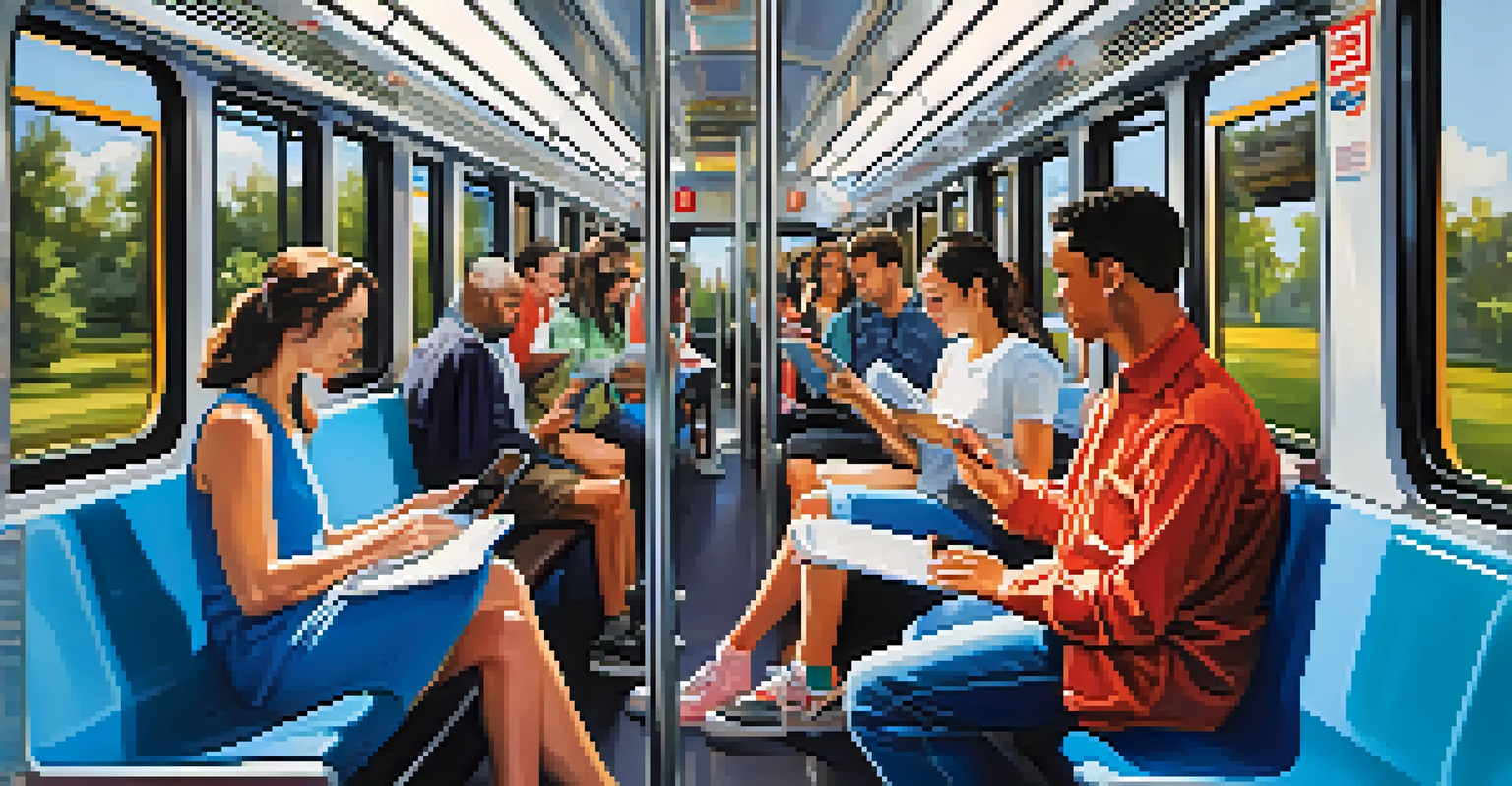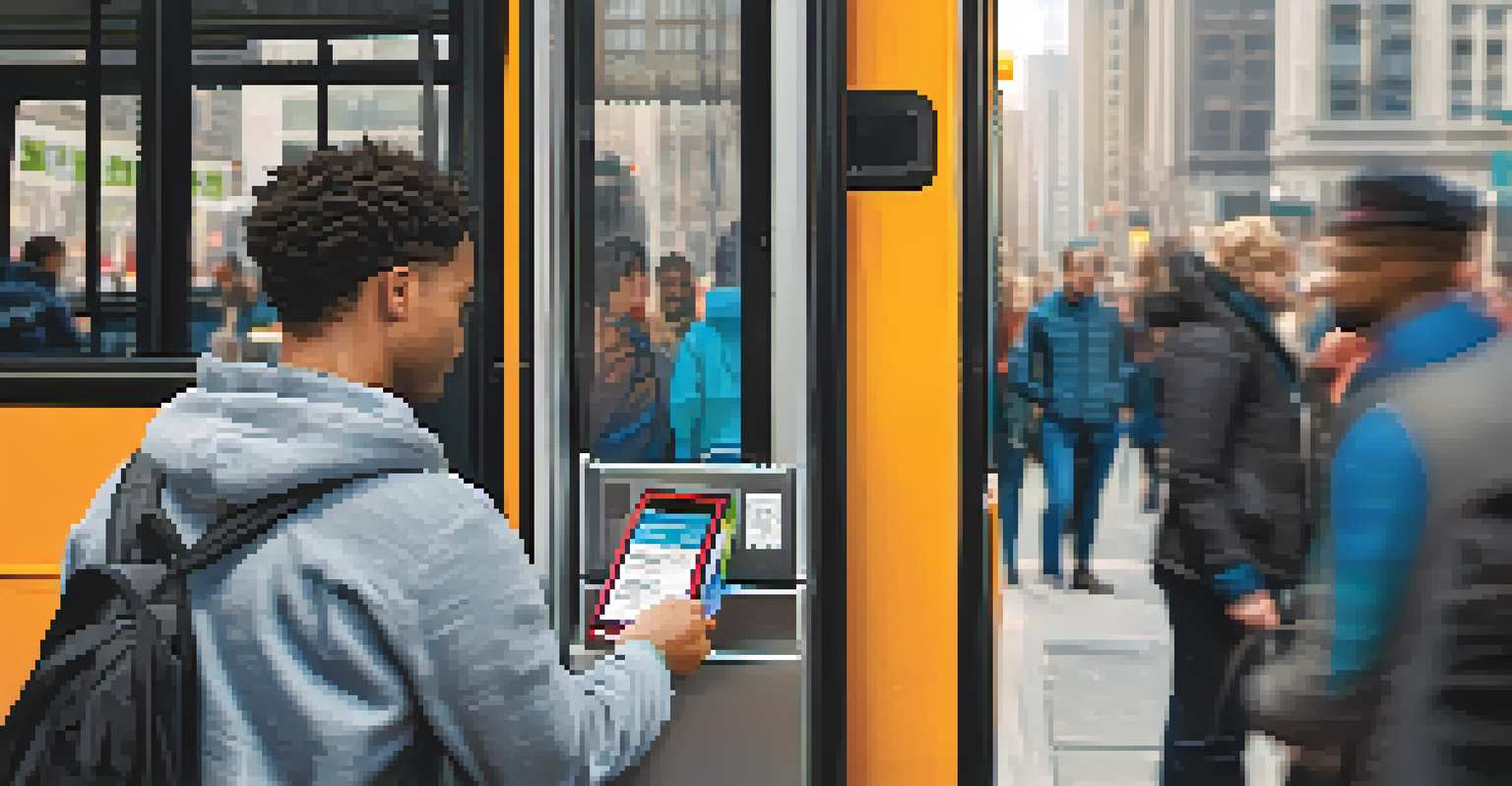Understanding the Chicago Transit Authority: A Key Player

What is the Chicago Transit Authority (CTA)?
The Chicago Transit Authority, commonly known as the CTA, is the primary public transportation agency serving the city of Chicago and its surrounding suburbs. Established in 1947, it operates an extensive network of buses and trains, providing essential services to millions of riders each year. With a mission to enhance mobility, the CTA plays a crucial role in ensuring residents and visitors can navigate the city efficiently.
Public transportation is the backbone of our communities, connecting people to jobs, education, and each other.
The CTA's system includes eight train lines and over 130 bus routes, making it one of the largest transit networks in the United States. This vast coverage not only connects neighborhoods but also links commuters to major employment centers, cultural attractions, and educational institutions. By offering reliable transportation options, the CTA fosters economic growth and accessibility across the region.
Moreover, the CTA continuously adapts to the needs of its riders through various initiatives, such as expanding service during peak hours and introducing new technologies. As urban populations grow, the CTA remains committed to improving its infrastructure and services to accommodate the evolving demands of the community.
The Importance of Public Transportation in Chicago
Public transportation is vital for any bustling city, and Chicago is no exception. The CTA not only alleviates traffic congestion but also reduces carbon emissions, making it an environmentally friendly option for getting around. By choosing public transit, commuters can help lessen their carbon footprint while enjoying the convenience of not having to navigate busy streets.

In addition to environmental benefits, the CTA provides economic advantages. Access to public transit can increase property values and attract businesses to areas served by the CTA. This creates a win-win situation: residents enjoy improved access to jobs and services, while businesses benefit from a broader customer base.
CTA: Chicago's Transit Backbone
The Chicago Transit Authority is essential for connecting residents and visitors to jobs, culture, and education through its extensive bus and train network.
Furthermore, public transportation enhances social equity by providing affordable travel options for all income levels. The CTA's fare structure is designed to accommodate various budgets, ensuring that everyone has the opportunity to access jobs, education, and essential services throughout the city.
CTA Services: Buses and Trains
The CTA operates a dual system of buses and trains, each designed to complement the other. The train system, known for its iconic 'L' trains, provides rapid transit across the city and into nearby suburbs. With elevated tracks and underground tunnels, the 'L' offers a unique and efficient way to travel, allowing riders to bypass street traffic and reach their destinations faster.
A city is only as strong as its public transportation system, which is vital for economic growth and social equity.
On the other hand, the CTA's extensive bus network fills in the gaps where train service may not reach. Buses can navigate through neighborhoods, providing access to local streets and areas that the trains do not service directly. This flexibility makes buses an essential component of the overall transit system, ensuring that riders have multiple options to choose from.
Both services are interconnected, allowing riders to seamlessly transfer between trains and buses. This integrated approach is beneficial for commuters, as it offers multiple routes and schedules to suit various travel needs. Whether you’re heading to work, school, or exploring the city, the CTA’s combined services facilitate a smooth and efficient travel experience.
Navigating the CTA: Tips for New Riders
If you're new to the CTA, navigating the system can seem daunting at first, but it’s easier than you might think. Start by familiarizing yourself with the CTA's website and mobile app, which provide real-time updates on train and bus schedules, route maps, and fare information. This digital toolkit can make planning your journey simple and stress-free.
When boarding a bus or train, it's essential to have your fare ready. The CTA offers various payment options, including Ventra cards and mobile payments, which streamline the boarding process. Having your fare prepared in advance helps keep the line moving and makes for a more pleasant experience for everyone.
Public Transit Boosts Economy & Equity
The CTA enhances economic growth and social equity by providing affordable transportation options that increase access to jobs and services for all income levels.
Lastly, don't hesitate to ask for help! CTA staff and fellow riders are often more than willing to assist if you have questions about routes or schedules. With a little preparation and guidance, you’ll soon feel comfortable navigating the CTA and exploring all that Chicago has to offer.
The Role of Technology in the CTA
In an age where technology is rapidly evolving, the CTA has embraced innovation to enhance the rider experience. The introduction of real-time tracking apps allows riders to see when their bus or train will arrive, minimizing wait times and uncertainty. This technological advancement not only improves convenience but also increases overall satisfaction with public transit.
Additionally, the CTA has implemented contactless payment systems, making it easier for commuters to pay their fares. By using mobile wallets or Ventra cards, riders can reduce the hassle of cash transactions and speed up the boarding process. This shift towards contactless solutions is especially beneficial in today's health-conscious environment.
Furthermore, the CTA continuously invests in upgrading its infrastructure, including modernizing train stations and improving accessibility features. These enhancements not only create a more inviting atmosphere for riders but also demonstrate the CTA's commitment to providing a safe and reliable transportation system for everyone.
Challenges Facing the CTA
Like any public transportation agency, the CTA faces its share of challenges. Funding is a significant issue, as the agency relies on a combination of fare revenue and governmental support. Economic downturns or budget cuts can impact service levels and maintenance, which may affect the reliability of the transit system.
Moreover, the CTA must address aging infrastructure, with some stations and trains requiring updates to meet modern standards. This ongoing challenge necessitates strategic planning and investment to ensure the system remains safe and efficient for all riders. Balancing these needs with the demand for expanded services can be a complex task.
Technology Shapes the Future of CTA
The CTA leverages technology, such as real-time tracking and contactless payments, to improve rider experience and ensure a safe and efficient transit system.
Finally, the CTA must navigate the delicate balance of ridership and safety. In recent years, concerns about safety and security on public transit have grown, prompting the CTA to enhance its security measures and outreach programs. By addressing these issues head-on, the CTA aims to create a safe environment that encourages more individuals to utilize public transportation.
Looking Toward the Future of the CTA
As Chicago continues to evolve, so does the CTA. The agency is committed to expanding its services and improving its infrastructure to meet the needs of a growing population. Future projects aim to enhance connectivity between neighborhoods and downtown, making it easier for residents to access jobs and opportunities across the city.
Sustainability is another key focus for the CTA, as the agency seeks to reduce its carbon footprint and promote environmentally friendly practices. Investments in electric buses and renewable energy sources are part of a broader strategy to create a more sustainable transit system. This commitment not only benefits riders but also contributes to the overall health of the community and environment.

Ultimately, the CTA's vision for the future is rooted in collaboration with the community. By engaging with riders, local businesses, and government agencies, the CTA aims to create a transit system that reflects the needs and aspirations of the people it serves. Together, they can build a more accessible, efficient, and sustainable transportation system for all.